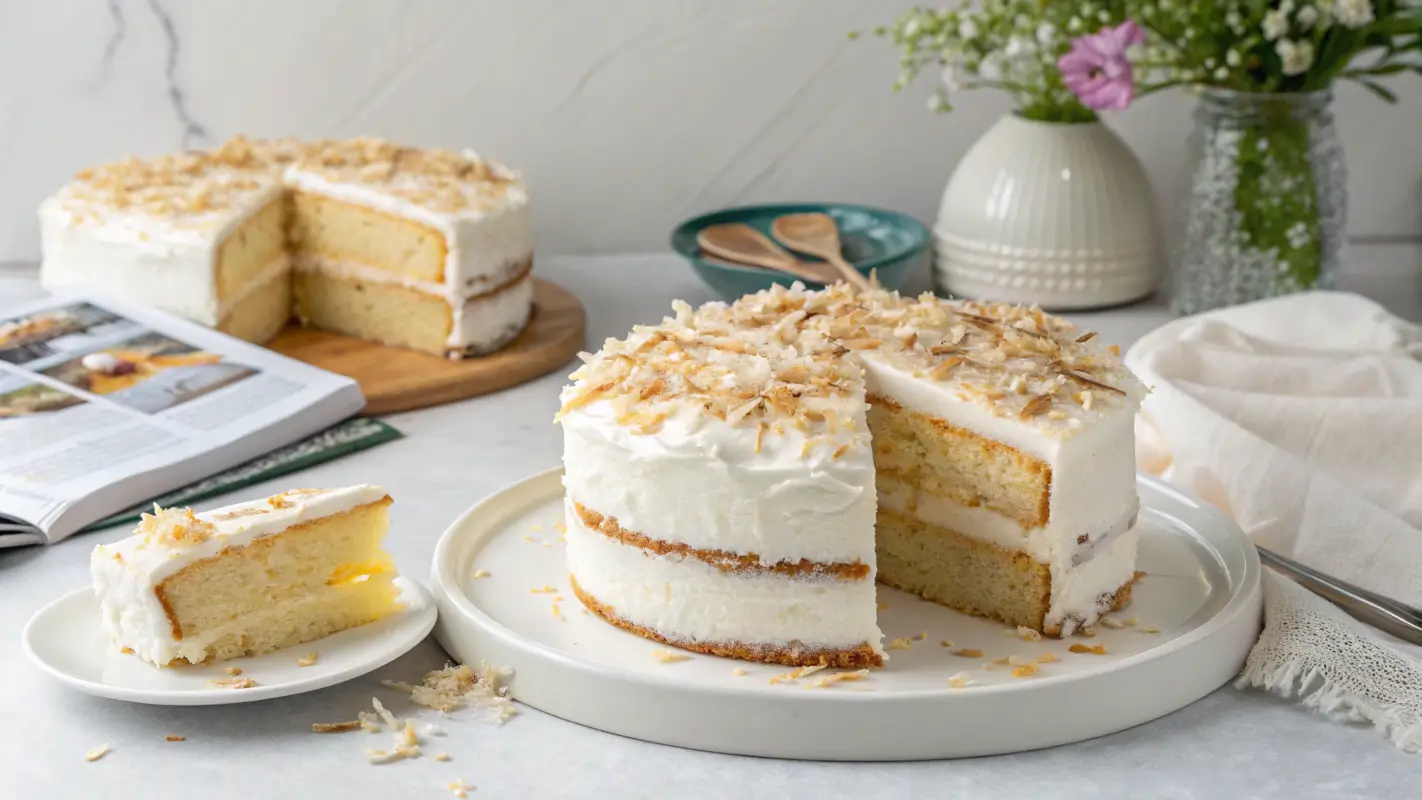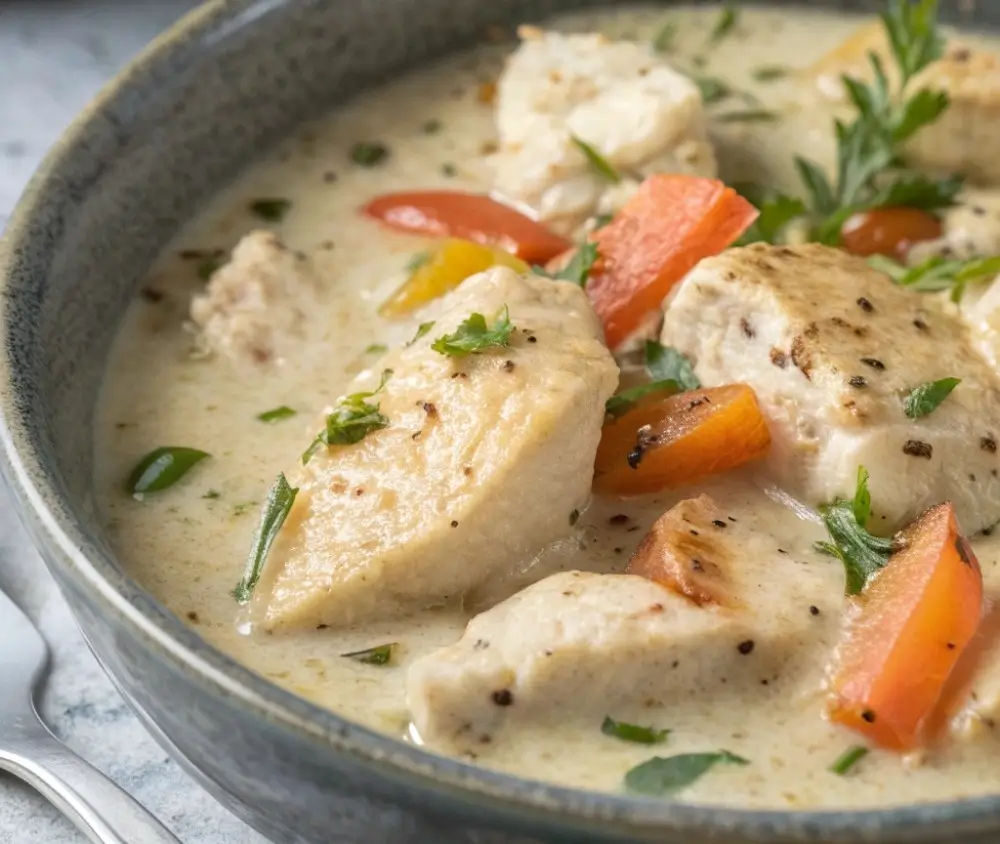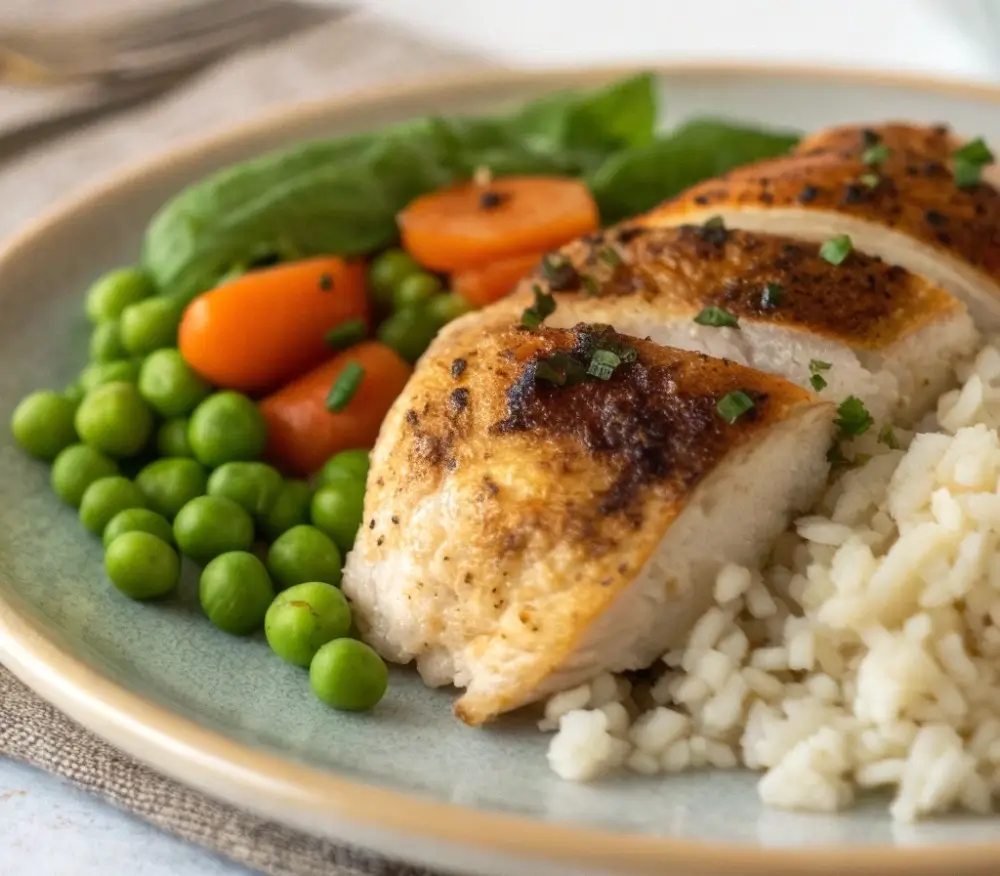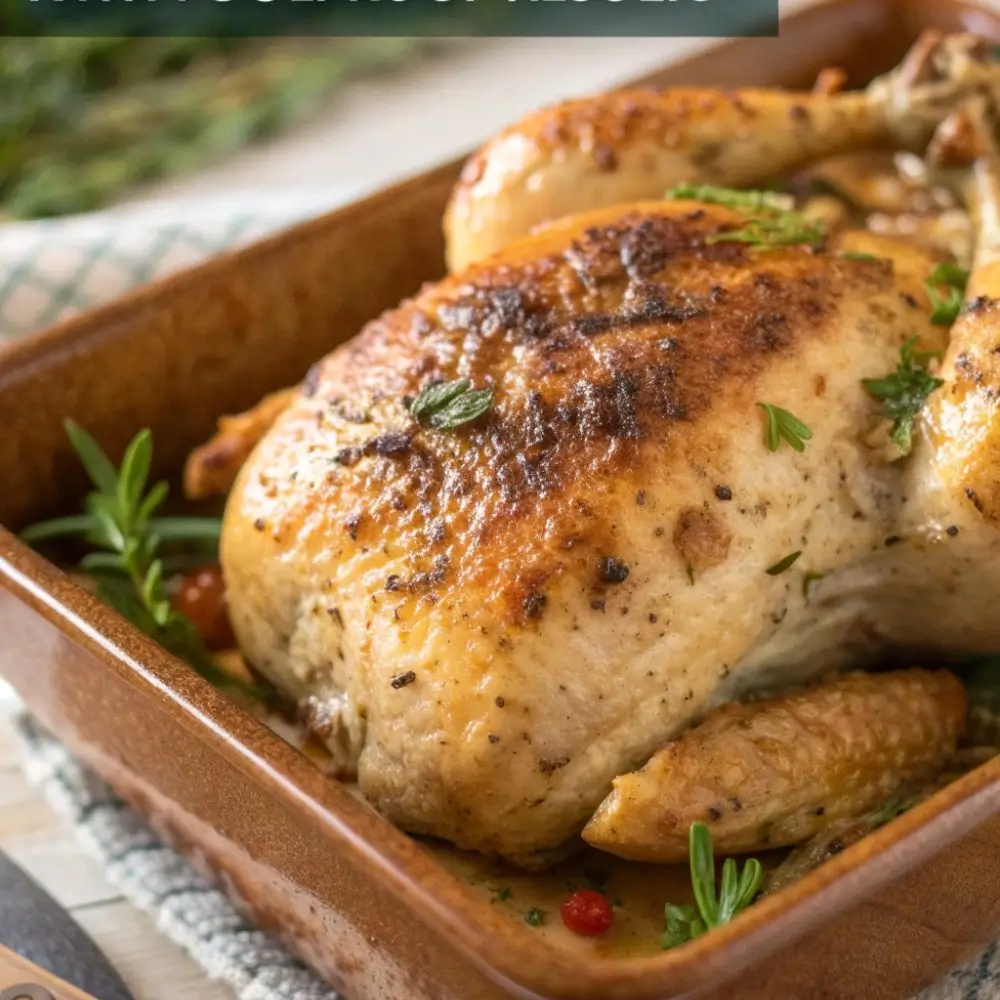Table of Contents
- 1 The Allure of Coconut Cake
- 2 Key Ingredients for Coconut Cake Recipe
- 3 Step-by-Step Baking Guide to Coconut Cake Recipe
- 4 Frosting and Decoration to Coconut Cake Recipe
- 5 Variations and Modifications to Coconut Cake Recipe
- 6 Presentation and Serving Suggestions
- 7 Embracing Seasonal Variations
- 8 FAQs About Coconut Cake Recipe
Welcome to the ultimate guide to baking the quintessential dessert that’s sure to impress: the coconut cake. Known for its moist, fluffy texture, and tropical flavor, this cake is not just a treat; it’s an experience. Whether you’re celebrating a special occasion or simply indulging in a sweet craving, our easy coconut cake recipe will guide you to create a masterpiece that looks as good as it tastes. Along the way, we’ll sprinkle in some pro tips, variations, and the best ways to serve and enjoy your creation. Ready to dive into the world of baking with a tropical twist? Let’s get started with the first part of our coconut cake journey.
The Allure of Coconut Cake
Coconut cake is more than just a dessert; it’s a symbol of celebration, a centerpiece at gatherings, and a beloved tradition in many households. The allure of this cake lies in its ability to transport us to tropical paradises with just one bite. The combination of sweet, nutty coconut flakes and the light, airy cake creates a symphony of flavors that’s hard to resist.
A Brief History
The history of coconut cake is as rich as its flavor. Originating from the South, this cake quickly became a staple in American baking. Its evolution over the years has seen it transform from simple coconut-flavored cakes to elaborate multi-layered confections, each with its unique charm and taste.
Why It’s a Crowd-Pleaser
What makes coconut cake a crowd-pleaser is its universal appeal. Its moist texture, combined with the richness of coconut, makes it a hit among all age groups. Plus, its elegant appearance, with snowy-white frosting and shredded coconut garnish, makes it a showstopper at any event. Whether it’s a wedding, birthday, or just a casual Sunday dinner, coconut cake promises to add a touch of joy and festivity.
Stay tuned as we dive into the key ingredients that make this cake a tropical delight in the next section of our coconut cake saga. And don’t forget, a great recipe is just the beginning. For more culinary inspirations, check out Opera Cake: A Classic French Dessert to explore the elegance of opera cake, another masterpiece that combines layers of flavor in every bite.
Key Ingredients for Coconut Cake Recipe
Essential Ingredients Overview
To bake a coconut cake recipe that’s truly unforgettable, you need the right ingredients. These not only impart the signature flavor but also ensure that the cake has the perfect texture—moist, fluffy, and light.
Choosing the Right Type of Coconut
The star of the show is, undoubtedly, coconut. But not just any coconut will do. For that deeply tropical flavor and moistness, sweetened shredded coconut is preferred. It blends perfectly into both the batter and frosting, adding sweetness and texture. For an extra coconutty kick, using coconut milk instead of regular milk enriches the cake with a creamy, rich flavor.
Importance of Cake Flour and Coconut Milk
Cake flour plays a pivotal role in achieving that soft, tender crumb we all love in a coconut cake recipe. Its lower protein content compared to all-purpose flour means less gluten is formed, resulting in a lighter cake. And then there’s coconut milk—this is not just any ingredient; it’s the secret to the cake’s luxurious moistness. Opt for full-fat, canned coconut milk to infuse every bite with tropical goodness.
Each ingredient in this recipe is carefully chosen to ensure the cake is a celebration of flavors and textures. Remember, baking is not just about following a recipe; it’s about bringing together the best ingredients to create something extraordinary.
Ready to mix these ingredients into a tropical treat? Stay tuned for our step-by-step baking guide, where we’ll share the secrets to mixing, baking, and frosting your way to coconut cake recipe perfection. And if you’re keen on exploring more delightful recipes, why not pair your coconut cake with Earl Grey Cookies for a truly elegant dessert experience?
Step-by-Step Baking Guide to Coconut Cake Recipe
Preparing Your Coconut Cake Recipe
Baking a coconut cake is like orchestrating a symphony, where each ingredient plays a crucial role. Let’s begin with the preparation, ensuring every layer is infused with coconut’s enchanting flavor.
Mixing the Dry Ingredients
Start by whisking together your cake flour, a pinch of salt, and baking powder in a large bowl. This mixture is the foundation of your cake, providing the lift and structure needed for a light and airy texture.
Whipping the Egg Whites to Perfection
Egg whites are the secret to the cake’s fluffiness. In a separate bowl, beat the egg whites until they form stiff peaks. This step incorporates air into your batter, making it as light as a cloud.
Combining Wet and Dry Ingredients
Gently fold the wet ingredients into the dry, being careful not to deflate the egg whites. Add the coconut milk, oil, and extracts, blending until just combined. The key here is a light touch to maintain the batter’s airy texture.
Baking the Cake
Pour the batter into prepared pans, smoothing the tops with a spatula. Bake until golden and a tester comes out clean. Remember, patience is a virtue; don’t open the oven too frequently, as the temperature fluctuations can affect the cake’s rise.
Tips for Perfect Baking
To ensure even baking, rotate your pans halfway through. Every oven is different, so keep an eye on your cake and adjust the baking time as needed.
Cooling and Layering
Allow the cakes to cool in the pans for a few minutes before transferring them to a wire rack. Once completely cool, it’s time to assemble. A thin layer of coconut buttercream between each layer not only adds flavor but also keeps the cake moist.
Frosting and Decoration to Coconut Cake Recipe
Crafting the Perfect Coconut Buttercream
For the frosting, beat together butter, powdered sugar, and coconut milk until smooth and fluffy. Add a dash of coconut extract for that extra tropical aroma.
Applying the Frosting and Coconut Flakes
Spread a generous layer of frosting over the top and sides of the cake. Then, press shredded coconut onto the frosting, covering the cake in a snowy blanket of coconut.
Decorating for Different Occasions
Whether it’s elegant rosettes for a birthday or playful sprinkles for a party, the final touches on your coconut cake make it truly yours.
Congratulations, you’ve just baked a masterpiece! With these steps, you’ve transformed simple ingredients into a confection that’s as beautiful as it is delicious. And if you’re looking to expand your baking repertoire further, consider diving into the world of Muddy Buddies for an easy, yet satisfying treat. Stay tuned for our next section, where we’ll explore creative variations to make your coconut cake recipe even more special.
Variations and Modifications to Coconut Cake Recipe
Customizing Your Coconut Cake Recipe
Every baker has their signature touch, and your coconut cake is no different. Whether you’re catering to dietary restrictions or simply looking to experiment, there are countless ways to customize this tropical treat.
Gluten-Free and Vegan Options
For those who require a gluten-free option, you can easily substitute the cake flour with your preferred gluten-free flour blend. It’s important, however, to ensure it’s a 1:1 substitution to maintain the cake’s delicate structure. Moreover, to veganize your cake, opt for plant-based milk and oil instead of traditional dairy products. Additionally, you can use aquafaba or another favored egg substitute to achieve that desired light and airy texture, making the cake not only delicious but also inclusive.
Flavor Variations and Add-Ins
The real beauty of a coconut cake recipe lies in its incredible versatility. By infusing the batter with lemon or lime zest, you add a citrusy twist that perfectly complements the coconut’s sweetness. Furthermore, for those who enjoy a bit of texture in their cakes, mixing in chopped nuts provides an added crunch that’s both surprising and delightful. Also, for an extra layer of tropical flavor, consider substituting a portion of the coconut milk with pineapple juice. This modification can transform your cake into a piña colada-inspired delight, proving once again that with a few simple tweaks, you can tailor this classic dessert to suit any taste preference.
Presentation and Serving Suggestions
Serving Your Coconut Cake
A beautifully baked coconut cake deserves to be presented and served in a way that highlights its elegance and flavor.
Pairing with Beverages
Serve your coconut cake with a selection of beverages that complement its tropical taste. A cup of Earl Grey tea accentuates the cake’s sweetness, while a glass of cold milk contrasts its richness. For a non-dairy option, try coconut milk to double down on the tropical theme.
Storing Leftovers
Leftover coconut cake, if you have any, should be stored properly to maintain its moisture and flavor. Wrap it tightly in plastic wrap or keep it in an airtight container. You can store it in the refrigerator for up to five days. For longer storage, freeze the cake for up to three months, ensuring it’s well-wrapped to prevent freezer burn.
Embracing Seasonal Variations
Celebrating Seasons with Coconut Cake
As the seasons change, so do our dessert preferences. Coconut cake, with its versatile flavor profile, can be adapted to highlight the best of each season, making it a perfect dessert year-round. Let’s explore how to tailor your coconut cake to celebrate the uniqueness of each season.
Spring Flavors
As the season changes to spring, we welcome fresh, light flavors that awaken our senses. To capture this essence, incorporate lemon or lime zest into your cake batter and frosting, offering a citrusy contrast that beautifully complements the coconut’s inherent sweetness. Furthermore, consider adorning your cake with edible flowers or fresh berries. This not only provides a festive and colorful presentation but also celebrates the renewal and vibrancy of spring.
Summer Tropical Twist
Similarly, as we transition into summer, the demand for bold, tropical flavors becomes undeniable. Introducing a layer of mango or pineapple compote between your cake layers will significantly accentuate the coconut’s tropical notes. Moreover, a garnish of fresh tropical fruits on top, such as kiwi, pineapple, or even a sprinkle of passion fruit seeds, can effortlessly turn your coconut cake into a quintessential summer sensation.
Autumn Warmth
Subsequently, as autumn unfolds, it brings with it a craving for cozy, warm flavors. Embrace this shift by incorporating spices like cinnamon, nutmeg, or cardamom into your coconut cake batter. These warm spices blend beautifully with coconut, creating a comforting dessert that’s perfect for those crisp fall evenings. Additionally, a drizzle of caramel on top or a sprinkle of toasted pecans can introduce a delightful autumnal touch to your cake.
Winter Elegance
Lastly, as we enter the winter season, the chill in the air calls for richer, more decadent desserts. To respond to this, enhance your coconut cake with a layer of chocolate ganache or a coffee-infused buttercream, which brings warmth and depth to the cake’s flavor profile. Moreover, decorating with silver or gold edible glitter or sugar pearls adds a touch of winter elegance. This makes your coconut cake not just a dessert, but an ideal choice for holiday gatherings and festive celebrations.
Pairing with Seasonal Beverages
Beyond the cake itself, consider pairing your seasonal coconut cake with beverages that complement the flavors of the season. A light, floral tea might be perfect for spring, while a chilled tropical smoothie can enhance summer’s vibrancy. Warm spiced cider or a rich hot chocolate can accompany your cake in the autumn and winter months, respectively, creating a cozy and indulgent experience.
Dive into the nutritional profile of coconut and its benefits in baking and cooking.
FAQs About Coconut Cake Recipe
Your coconut cake journey might come with questions. Let’s tackle some of the most common ones to ensure your baking adventure is as smooth as possible.
Can I Make This Cake in Advance?
Absolutely! Coconut cake tastes even better the next day, as the flavors have time to meld together. You can bake the cake layers ahead of time, wrap them individually, and store them in the fridge or freezer. Assemble and frost the cake a day before your event for optimal taste and texture.
How Do I Prevent the Cake from Drying Out?
To keep your coconut cake moist and delicious, avoid overbaking it. Keep a close eye on the oven and perform a skewer test to ensure doneness. Once baked, allow the cake to cool in the pan for a few minutes before transferring it to a wire rack. When storing, ensure it’s wrapped or covered to prevent air from drying it out.
Can I substitute coconut oil for vegetable oil?
Yes, coconut oil is a fantastic substitute that enhances the cake’s coconut flavor. Just make sure it’s in liquid form when mixing.
How do I ensure my frosting is smooth and spreadable?
Make sure your butter is at room temperature before beating it. If the frosting is too thick, gradually add a bit more coconut milk until you reach the desired consistency.
Can I add coconut to the batter?
Yes, folding in sweetened shredded coconut into the batter adds texture and boosts the coconut flavor.
How can I decorate my coconut cake?
Besides coconut flakes, consider topping with fresh berries, edible flowers, or a sprinkle of powdered sugar for a simple yet elegant finish.
What’s the best way to slice the cake?
Use a sharp, serrated knife and clean it between slices to ensure neat, beautiful cuts.
With these tips and variations, you’re well on your way to baking a coconut cake that’s uniquely yours. Whether you stick to the classic recipe or venture into creative modifications, the end result is sure to be a dessert that delights and impresses.
Final Thoughts
Embarking on your coconut cake journey, you’ve explored the rich history, essential ingredients, and step-by-step baking guide to create this tropical delight. By customizing your cake with gluten-free or vegan options, incorporating flavor variations, and following our presentation and serving suggestions, you’re now equipped to bake a coconut cake that not only looks stunning but also tastes divine.
Coconut cake is more than just a dessert; it’s a celebration of flavors, textures, and aromas that transport you to a tropical paradise with each bite. It’s a testament to the joy of baking and the pleasure of sharing something beautiful and delicious with those you love.
Remember, baking is an art and a science, but most importantly, it’s an expression of creativity and passion. So, whether you’re a seasoned baker or new to the kitchen, we encourage you to put your unique spin on this classic cake. Experiment with ingredients, decorations, and flavors to make a coconut cake that’s uniquely yours.
Thank you for joining us on this coconut cake journey. Happy baking, and may your days be filled with sweetness and joy!





